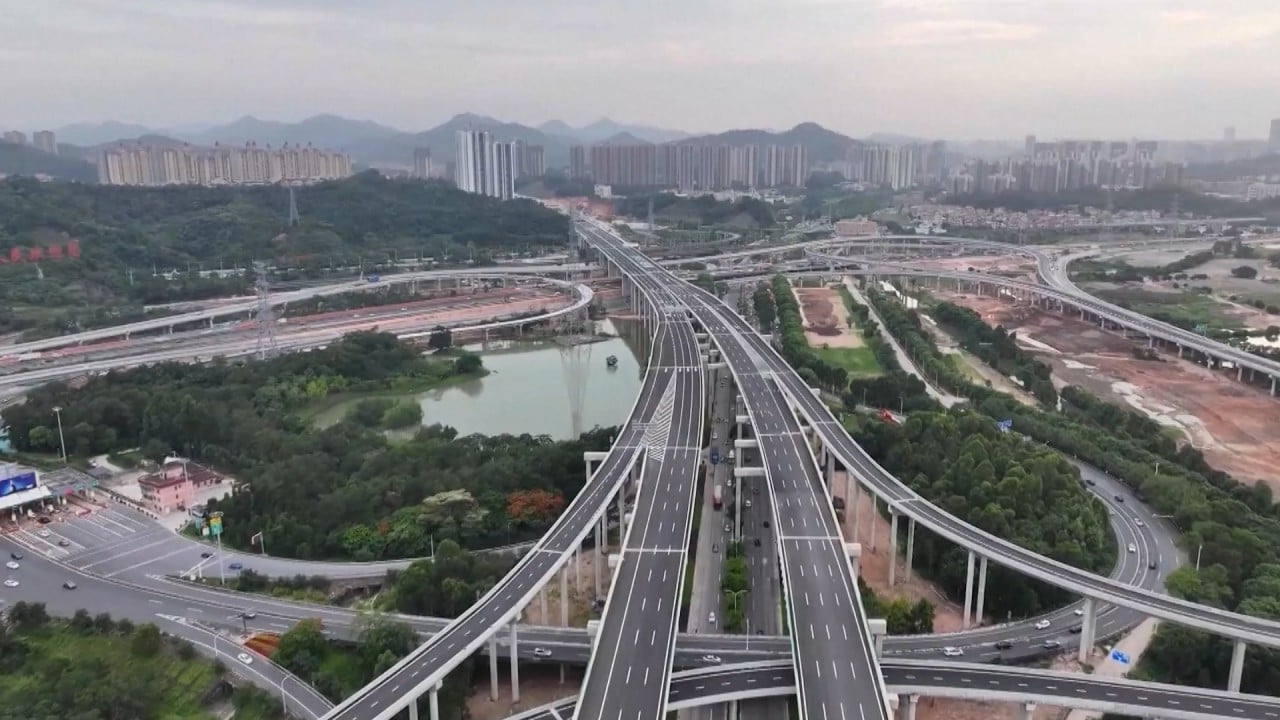China’s winter sports push heats up as experience economy gathers pace with indoor skiing

Average temperature reached record highs in China in July, but Shenzhen’s indoor ski resorts offered a stark contrast to the heat that had descended on China’s Southern tech hub, while also providing a boost to cooling consumption that is weighing on the national economy.
With sub-zero temperatures, artificial snow, glass igloos and customers bundled up in colourful ski gear, indoor skiing has emerged as a surprise hit in Shenzhen, with bookings via Chinese shopping platform Meituan almost tripling in July from the previous month, according to CCTV.
“In rapid urbanised cities like Shenzhen, due to the rising levels of disposable income, residents have a growing appetite for new experiences like skiing,” said Lu Baoying, senior industry analyst at Zhiyan Consulting Group.
China is home to some of the world’s largest indoor ski facilities, with the largest the Wanda Snow Park in the northern Heilongjiang province covering an area equal to about nine football pitches.
“Due to the lack of similar indoor ski facilities in Hong Kong, we’ve seen an explosive increase in customers from Hong Kong after the travel restrictions were lifted, especially during weekends and public holidays,” said Feng Chao, who works as marketing director at Karoo Ice and Snow World in Shenzhen.
Hong Kong teacher Minnie Ho spent half a day at a ski resort in Shenzhen two weeks ago, with a two-hour ticket costing 250 yuan (US$35).
“The price was quite reasonable for me compared to leisure activities in Hong Kong,” said Ho.
However, some residents in Shenzhen found indoor skiing less attractive.
Customers are price sensitive. As long as they can play in the snow, they will be more willing to choose the cheaper option
“The current ski resorts in the city look dull to me. And given the cost, I don’t think it’s great value for money. I’d be more tempted to try it out when the new, larger one opens next year,” said Sue Su, who works for a media company in the city.
Prices at the major indoor ski resorts in Shenzhen average at around 100 yuan per hour, with most requiring a minimum two-hour stay.
On Meituan, the most popular package at Karoo Ice and Snow World in Shenzhen was a two-hour snow play option, which does not include skiing.
“But it’s quite hard for customers who paid for snow play to become loyal customers as there are cheaper options in Shenzhen – with lower quality of the artificial snow, of course,” added Feng.
“However, customers are price sensitive. As long as they can play in the snow, they will be more willing to choose the cheaper option.”
But despite the 40 per cent increase in customers at Karoo Ice and Snow World in the first half of this year, there were fewer visitors from Hong Kong in July following the opening of the Shenzhen-Zhongshan Link – a combination of two bridges, a tunnel and two artificial islands connecting the two sides of the Pearl River Delta – which has provided Hong Kong residents more travel options within mainland China.
Visitors to the attraction from Shenzhen last month only increased by 4 per cent from a year ago.
During the first half of the year, retail sales in Shenzhen increased by only 1 per cent, while retail sales in Guangdong province increased by 1.2 per cent.
But Feng remained optimistic as the resort targets middle-class skiing enthusiasts, who would be able to maintain their spending, while Shenzhen’s large population also provides a substantial customer pool.
“The experience economy is gaining momentum, with consumers increasingly valuing unique and unforgettable experiences,” added Lu at Zhiyan Consulting Group.
“Skiing, as a distinctive experiential activity, holds significant appeal and can attract those seeking novelty and thrill.”
Source link





